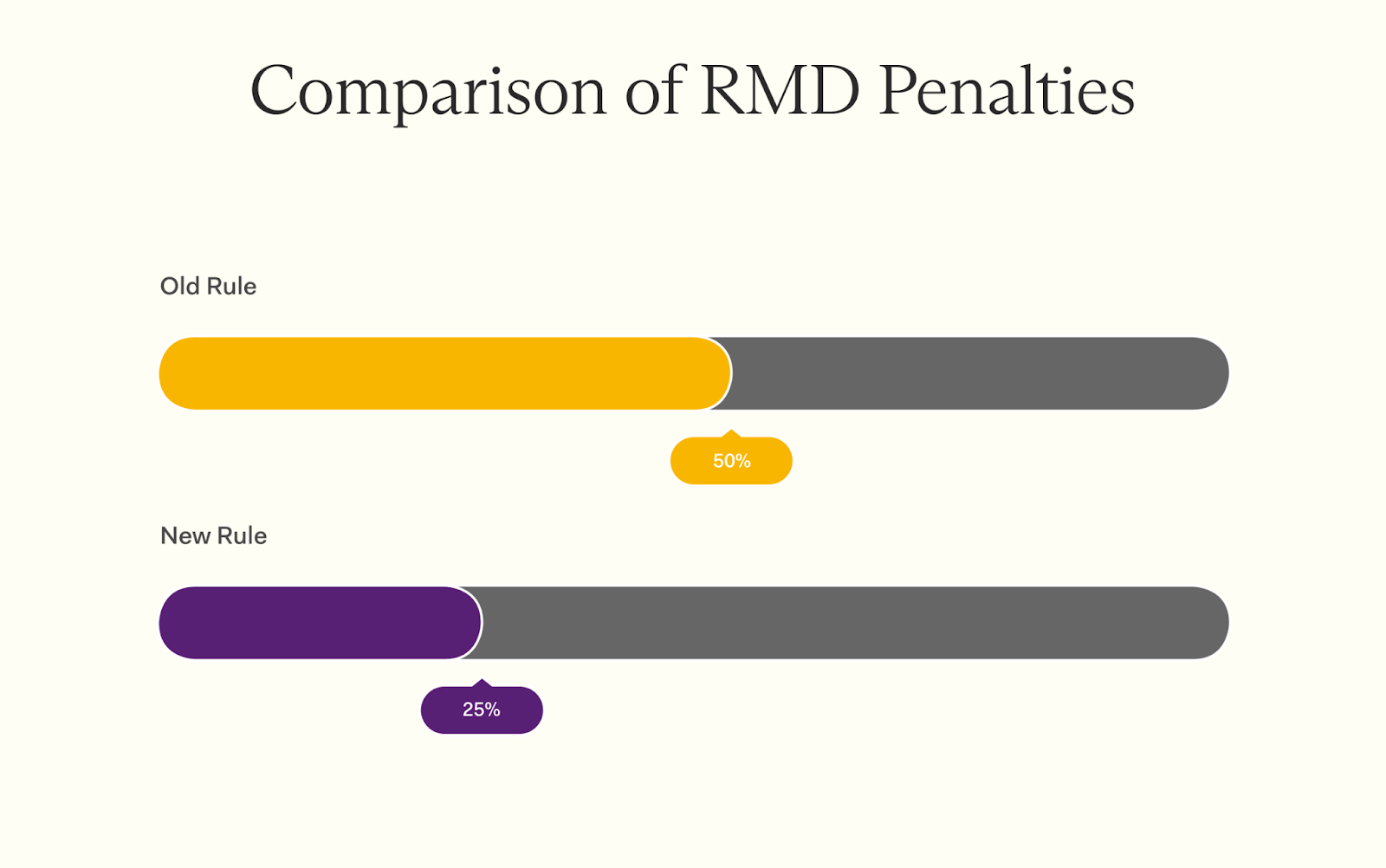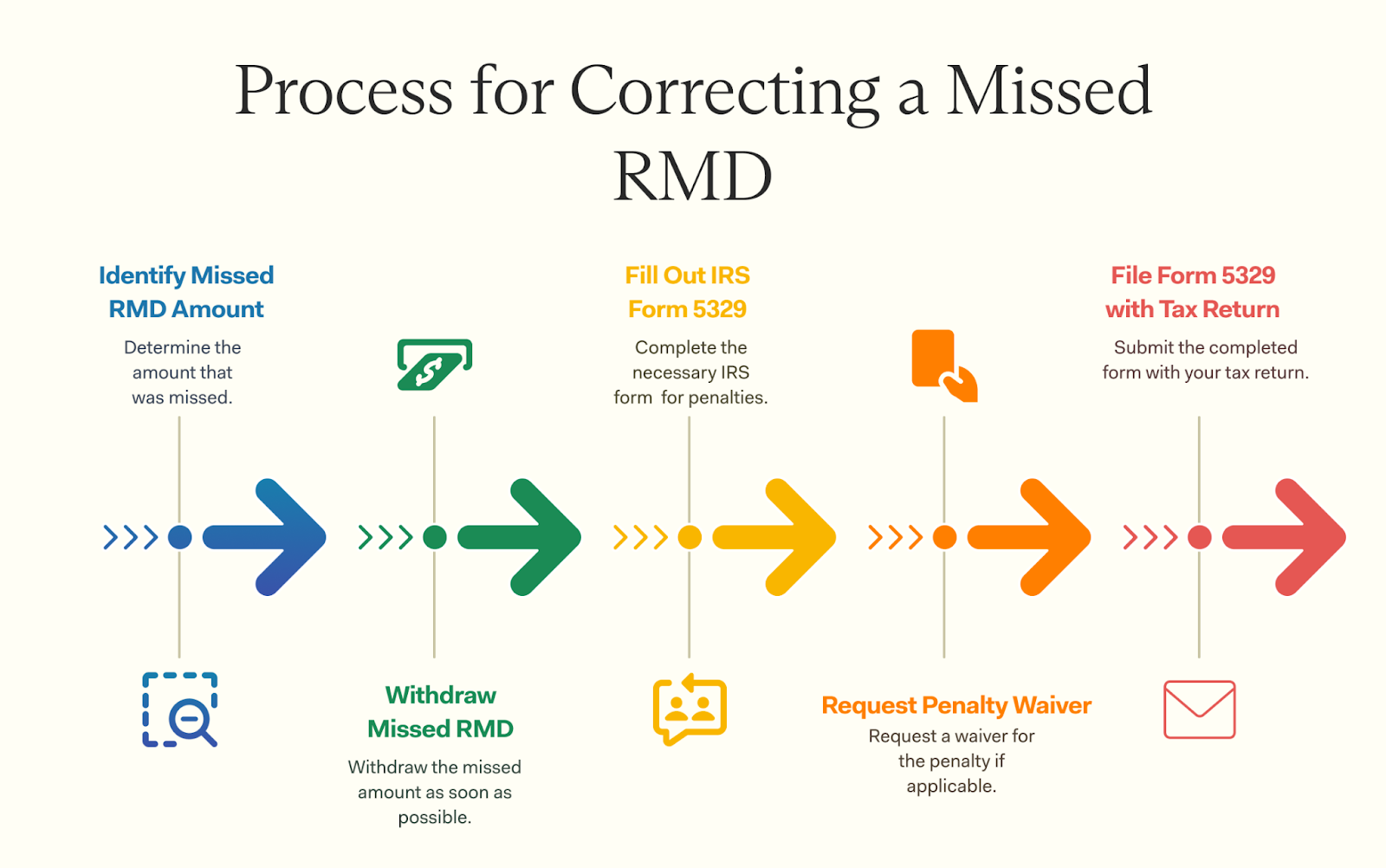Discover the consequences of failing to take your required minimum distributions (RMDs) and learn how to avoid penalties. Read more to stay compliant.
Curious about the penalty for skipping required minimum distributions (RMDs) from your retirement accounts? You're not the only one. The RMD rules are tricky, and it's easy to slip up.
Missing an RMD can lead to a large tax penalty. This article will break down what RMDs are, the penalties for missing them, and how to correct that mistake. We'll go through excise taxes and how to file specific IRS forms properly.
This information will help you handle your retirement savings better and avoid expensive mistakes.

A Required Minimum Distribution (RMD) is what the government requires you to withdraw from your tax-deferred retirement accounts, such as 401(k)s and traditional IRAs, once you reach a certain age.
This age was recently updated to 73 for those born on or after January 1, 1951. The RMD amount depends on your account balance and life expectancy.
Uncle Sam uses RMDs to collect taxes on retirement savings that benefited from years of tax deferral.
RMDs start when you hit the specified age and are not optional. If someone inherits an IRA or similar account, special rules determine their required withdrawals based on their relationship with the deceased and their age.
Failing to take RMDs can lead to significant penalties. If you skip your required minimum distribution, the IRS will now charge a 25% excise tax on the missed amount, which could be reduced to 10% if the error is corrected timely. For instance, if your RMD was $4,000 and you missed it, you'd owe $1,000 in penalties. The rules apply to various accounts like IRAs and 401(k)s at age 73 or when reaching the required beginning date, depending on your year of birth.
The penalty has been reduced to 25% from its previous 50%, and if corrected within two years, it can be further reduced to 10%. Account holders should file IRS Form 5329 and may request a penalty waiver from the Internal Revenue Service by demonstrating reasonable cause for the missed RMD.
The consequences of missing a required minimum distribution can be severe, with the IRS imposing significant financial penalties on the amount you should have withdrawn.
The IRS takes missed distributions seriously. They impose an excise tax of 25% on the amount you should have withdrawn but didn't. For instance, if your RMD was $4,000 and you missed it, you'd owe $1,000 in penalties.
This means you'll face a hefty tax burden just for skipping the withdrawal.
The rules apply to various accounts like IRAs and 401(k)s at age 73 for individuals born in 1951 or later, or when reaching the required beginning date set for those born earlier. Missing these distributions can hurt your financial health, especially since you still need to pay taxes on that missed income later.
It's crucial to stay on top of these annual RMD deadlines to avoid this costly mistake!
The penalty for missed RMDs has recently become less severe. The excise tax used to be 50% of the required amount not taken. Now, it has been reduced to 25%, and it can be lowered further to 10% if the missed RMD is corrected within two years. This change can help IRA owners and account holders avoid heavy taxes if they forget their distributions.
The IRS wants people to comply with RMD rules without harsh penalties. Still, anyone who misses an RMD must correct it quickly and demonstrate reasonable cause for the missed RMD when requesting a waiver by filing IRS Form 5329 with the Internal Revenue Service.
It's smart to consult a tax professional to handle this correctly and minimize any tax liability on retirement accounts like traditional IRAs or 401(k)s.

Did you miss your RMD? Don't worry—you can fix it. You may ask the IRS for a penalty waiver or fill out Form 5329 to show what happened and how you're fixing it.
You can request relief if you've missed taking your required minimum distribution. The IRS may forgive the excise tax on missed RMDs in some cases. To request this waiver, you need to act quickly.
Fill out IRS Form 5329 and attach a statement explaining the reasonable error that led to the missed RMD and the subsequent steps you've taken to remedy the situation. You must also enter "RC" and the amount you want waived in parentheses on the dotted line next to line 54 of Form 5329.
Getting help from your IRA custodian or tax advisor might be smart too—especially if you're unsure about filling out forms correctly.
Form 5329 is essential when dealing with missed Required Minimum Distributions. This form helps to report missed RMDs. It also allows you to request a penalty waiver. The IRS may forgive the excise tax on the missed amount, but you need to ask for it through this form.
You must include specific details about your retirement accounts like traditional IRAs and 401(k)s. Always double-check that you're filling it out correctly. Mistakes can lead to more issues with your federal tax return.
Submit Form 5329 along with your tax return for that year and keep records of everything... just in case!
Missing your Required Minimum Distribution can hit your finances hard with a 25% excise tax on the amount not taken. Though recent changes have made this penalty less severe than before, it remains significant.
The good news is that fixing a missed RMD is straightforward—request a waiver or complete IRS Form 5329 to potentially avoid penalties.
Staying informed about these rules helps protect your retirement savings. Have you checked if you're up to date with your RMDs? A little attention now can save considerable money and stress later!
If you don't take your RMDs on time, there's a significant tax penalty. The amount not withdrawn is initially taxed at 25%, and this rate could be reduced to 10% if the missed RMD is corrected within the set correction window, which is crucial for minimizing financial impact.
For most tax-deferred retirement accounts like 401(k), SEP IRA, and SIMPLE IRA, you must begin taking RMDs by April 1 of the year after turning 73. Roth IRAs do not require minimum distributions during the owner's lifetime, but designated Roth accounts within employer-sponsored plans are subject to RMD rules.
The amount of your annual withdrawal depends on several factors: your age, which corresponds to a distribution period or life expectancy factor from Uniform Lifetime Table; and your account balance as of December 31st of the previous calendar year.
Yes! If you missed making automatic withdrawals for your first RMD but took action before December 31st, you can file Form 5329 with the IRS explaining why you missed it, documenting the reasonable effort and remedial steps taken. Remember to enter "RC" and the amount you wish to have waived in parentheses on the dotted line next to line 54.
After an owner's death, designated beneficiaries or sole beneficiary can inherit these accounts and continue receiving distributions based on a single life expectancy table or survivor table II depending upon their relationship with the deceased.
Indeed! You can directly transfer up to $105k per year from traditional IRA balances towards qualified charities as Qualified Charitable Distributions. This adjustment does not count towards taxable income yet satisfies annual withdrawal requirements, thus avoiding potential RMD penalties.